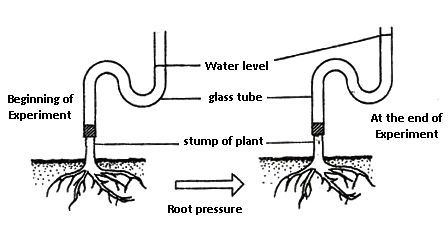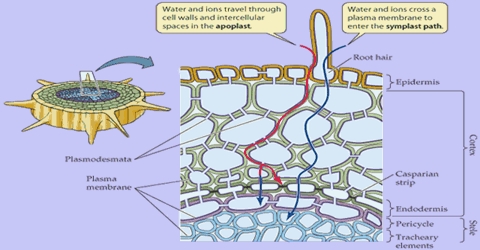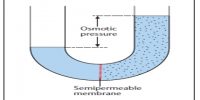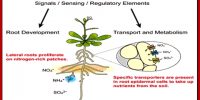Root Pressure
The total turgor pressure of the cortex tissue as a result of which water enters the xylem vessels through endodermis called root pressure. It is not common among trees of the Temperate Zone and occurs mostly in the spring before leaves develop and transpiration is rapid. It is mainly generated by osmotic pressure in the cells of the roots and can be established by exudation of fluid when the stem is cut off just above the ground. It is the transverse osmotic pressure within the cells of a root system that causes sap to rise through a plant stem to the leaves. It is partly accountable for the rise of water in plants. For example, in non-woody plants, osmosis allows plant cells to accumulate water and be plump enough to keep the plant upright.
Plants are intricate organisms, and one of the many absorbing processes of a plant is root pressure. This pressure is essentially the idea that a plant’s roots can either maintain a higher or lower pressure based on its surroundings. It is more common during the spring seasons before the leaves develop and the rate of the transpiration is rapid. The effects of this pressure can be seen only during nights and in the early morning as the rate of evaporation is very low.

Fig: Experiment of Root Pressure
Root pressure Occurrence
- The root pressure is more where water content is more. In mangrove trees, which grape on semi-mud-water soil, the root pressure is more than the black soil which has among the least fluid content or density.
- This pressure is osmotic pressure within the cells of a root system that causes the juice/vitamins/water to rise through a plant stem to the leaves.
- This pressure occurs in the xylem of some vascular plants when the soil moisture level is high either at night or when transpiration is low during the day.
- At night in some plants, root pressure causes guttation or exudation of drops of xylem sap from the tips or edges of leaves.
- The pressure is a fundamental property of fluids, so it is viable in liquids like water. The soil constantly transports nutrients and water to plants, creating and low-pressure zone, where the water from soil enters the semi-permeable membrane of the root.
Importance
- Root pressure is caused by the active distribution of mineral nutrient ions into the root xylem.
- The main contribution of this pressure is to establish the continuous movements of the water molecules in the xylem which can be affected by transpiration.
- In plants, it force that helps to drive fluids upward into the water-conducting vessels (xylem). It is partially responsible for the rise of water in plants.
- It is a force or the hydrostatic pressure generated in the roots that help in driving the fluids and other ions from the soil in upwards directions into the plant’s vascular tissue
- Without transpiration to carry the ions up the stem, they accumulate in the root xylem and lower the water potential.














